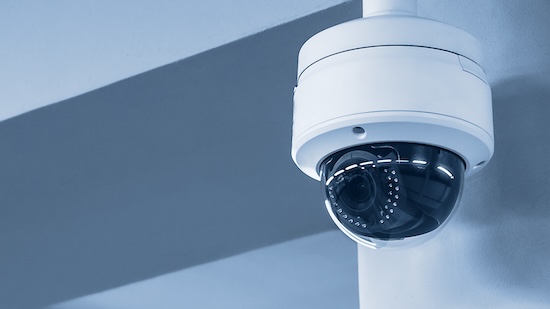Look up at your video camera. Glance at your video surveillance system. Is it everything it should be?
Too often, cannabis business owners start up a business and piecemeal a system together. Then, as they grow, it doesn’t do the job as well as it should. Sure, it meets regulations. But have you ever thought about what would happen if you actually needed it?
Would it be enough to help you recover?
Do you have suitable protocols in place?
Camera Placement
Is your facility fully covered inside and out? The only way to know is to thoroughly assess the facility’s layout to identify where coverage is needed. Consider factors such as line of sight, potential obstructions, and optimal camera angles for capturing relevant activity. Start with cameras at entry and exit points. Don’t forget critical areas like grow rooms, processing areas, and storage facilities. By using a combination of fixed, pan-tilt-zoom (PTZ), and dome cameras, you should be able to cover every area effectively.
Backup Systems
What would happen if your on-site storage system failed? We’ve all experienced a device or system failure. Panic sets in as you think of all that might be lost. That can just as easily happen with your video surveillance system if you don’t have the proper protocols in place. Implement redundant storage solutions, such as RAID configurations or automatic backup to secondary storage devices. Regularly test these backup systems to ensure they function correctly. Verify the integrity of all backed-up footage. It’s the only way to ensure you’re safe from data loss.
Privacy Considerations
Are you adhering to privacy laws? Familiarize yourself with relevant privacy laws and regulations governing video surveillance in your jurisdiction. Keep in mind that this can change periodically, so it’s a good idea to have someone on board who will track updates. Then, clearly define surveillance zones and camera angles to avoid recording areas where individuals reasonably expect privacy. You should also implement measures such as privacy filters or masking to obscure sensitive information, such as faces or license plates, when necessary.
Lighting Conditions
Are your cameras truly capable of recording what’s going on? Cameras aren’t miracle workers. If they record in the dark without sufficient light, they can only capture what they’re capable of capturing. Depending on your conditions, you might need cameras equipped with low-light or infrared capabilities to capture clear footage in dimly lit environments. You should also position cameras to minimize glare and backlighting, adjusting angles as needed to optimize image quality. If you need supplemental lighting in areas with poor visibility, do so to enhance camera performance.
Camera Maintenance
When was the last time you thought about maintenance? A video surveillance system isn’t something you can “set and forget.” establish a regular maintenance schedule for cleaning and inspecting cameras, lenses, and housings to ensure optimal performance. This gives you a chance to monitor cameras for signs of wear or physical damage, such as condensation inside housings or loose mounting brackets. Address any issues promptly.
Cybersecurity
Can your video surveillance system be hacked? Think of it as you would your computer system. Implement best practices for cybersecurity, such as regularly updating firmware, changing default passwords, and using strong encryption protocols. Segment video surveillance networks from other IT systems to limit exposure to potential cyber threats and unauthorized access. Monitor network traffic and log access attempts to detect and respond to suspicious activity in real time.
Employee Training
How much do your employees understand about the video surveillance system? Educate employees on security protocols and best practices, such as maintaining confidentiality, avoiding tampering with cameras or recording equipment, and reporting suspicious activity promptly. Provide comprehensive training to employees on how to operate video surveillance systems effectively, including accessing live feeds, reviewing recorded footage, and exporting evidence for investigations. Trust this with your best employees – and have protocol in place in case they leave.
Staying On Top Of Video Surveillance
Effective video surveillance is paramount for ensuring the security and compliance of cannabis businesses. By addressing these often overlooked aspects outlined above, you can establish a robust security infrastructure that safeguards your assets, employees, and customers.
Staying abreast of evolving regulations and privacy considerations is also essential for maintaining compliance and avoiding potential legal pitfalls. By integrating your video surveillance system with other security technologies and protocols, you’ll ensure a safe and effective business space now and well into the future.
Need help? That’s what we’re here for. Let’s prioritize security measures to uphold the integrity of your operations so you can thrive in a rapidly evolving industry.
For IT Strategy, Security and Compliance, or Help Desk Services, reach out to us at Cannabis Technology Partners 360-450-4759.
